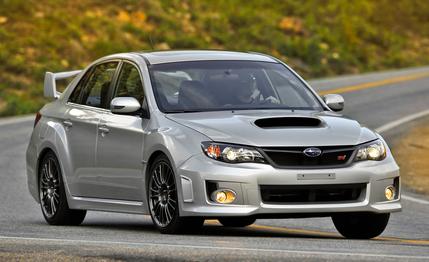
 Short Take Road Test
Short Take Road Test
The 2008–10 Subaru WRX STI was something of an enigma, a bit like people who enjoy eating headcheese. Whereas that car’s predecessor offered buyers a rawer-edged, faster version of the WRX, with more extreme rally-car looks tossed in to boot, the follow-up was a real disappointment, suffering from vague steering and being slower off the line than the base WRX. It, unlike the first STI, was not worth any portion of its several-thousand-dollar price premium.
Looking to address some of those deficiencies, Subaru gave the STI a thorough chassis retune for 2011. Stiffer springs, thicker front and rear anti-roll bars, revised front control-arm bushings, and firmer rear subframe bushings have been fitted. The ride height is lower by 0.2 inch, ostensibly for better aerodynamic performance.


The powertrain is unchanged, with a 305-hp turbocharged flat-four driving all four wheels via a six-speed manual transmission. Unlike the WRX, the STI features the adjustable SI-Drive system that allows the pilot to tune throttle response, and there are multiple modes for the STI-specific driver-controlled center differential (DCCD). The STI’s basic torque split is 41 percent front and 59 percent rear, but the DCCD’s six-step adjustability allows that to be fine-tuned up to 50/50, depending on driver preference and road conditions. There are also three automatic modes, which vary in their willingness to hold the rear torque bias.
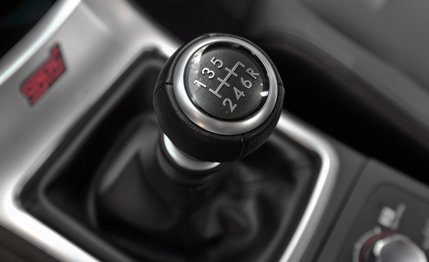

A perhaps more significant change for 2011, however, is the reintroduction of an STI sedan to accompany the five-door hatchback. The four-door is 6.5 inches longer than the five-door, although luggage space is down to 11.3 trunk-restricted cubes from the hatch’s 19 with the rear seats up. At 3420 pounds, the sedan we tested here was 34 pounds heavier than our long-term 2008 STI hatch. You’ll save $2000 by opting for the sedan over the hatch; the price difference can be pinned on the five-door’s adding lightweight BBS wheels and fog lamps as standard.
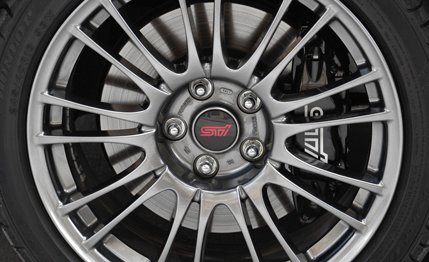

Both STI models get a more aggressive front fascia and a blacked-out grille; the sedan gets a wing that’s big enough to adorn a Formula 1 car. Inside, the stereo now has standard Bluetooth and USB connectivity. The sedan is available in this tony Limited form that nabs the fog lamps and forged BBS wheels that are standard on the hatchback, as well as leather seats and a sunroof. All STIs now include an All-Weather package that bundles heated front seats and side mirrors with windshield-wiper defrosting.
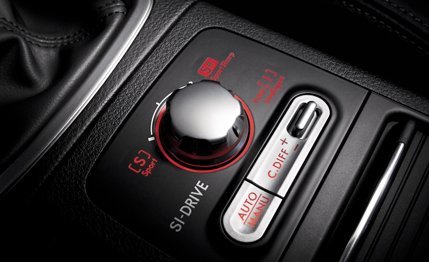

So far, so good. But the STI we tested for this review was a bit of a slug. Okay, that’s perhaps unfair to a car that sprints from 0 to 60 mph in 5.3 seconds, but that’s 0.3 second slower than both the last STI we had at the track in 2008 and a 2011 WRX. The five-speed WRX, of course, requires only one gearshift during a 0-to-60 run, whereas the six-speed STI needs two, but it was slower even over the quarter-mile: 13.9 seconds at 99 mph against 13.7 at 100 mph for the WRX. On the skidpad, this STI clung on to the tune of 0.90 g against 0.93 g for the previous example. (The WRX gets around at 0.89 g.)
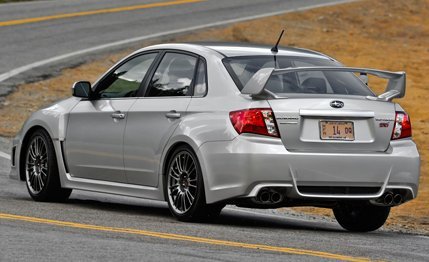

The sub-WRX pace was expected, given the absence of powertrain modifications among the 2011 alterations. But the verdict is mixed on the chassis tweaks. The STI rides in a more supple, controlled manner than the previous car, despite the stiffer front springs, which also help mitigate understeer at the limit. The steering, however, is still too light and isn’t particularly linear, which submarines a driver’s confidence on turn-in. It’s a shame, because the car is better balanced than before and the body seems better controlled in corners.
The bottom line is that the new STI is marginally better than the old one. The car’s real problem is the existence of the WRX, which is still faster and $8500 cheaper before options are added. On top of that, the WRX now looks like an STI, having received the latter’s wide-body modifications for this model year. The only thing separating them visually are the BBS wheels and the STI sedan’s gigantic wing. Yes, the STI has SI-Drive; a more sophisticated, adjustable center diff; and some structural reinforcements. But only track-day drivers or budding rally stars will notice the difference, and thus the car remains as much of an enigma as ever. We’d stick with the WRX.